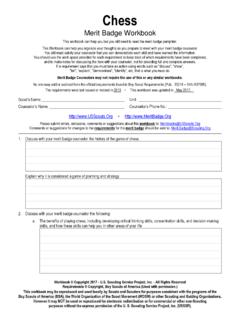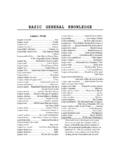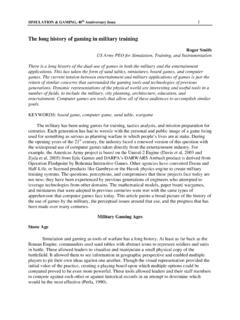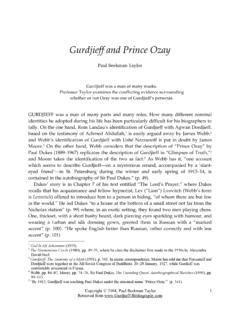Transcription of Australian ETF Report - Stockspot
1 2017 Australian ETF Report | Australian ETF Report - 2016 ContentsAbout this report4 What are ETFs?6 Types of ETF8 ETF Market Summary 10 Key Statistics10By Sector Group12By ETF Issuer14By Performance16By Funds Under Management (FUM)18 ETF Sectors 20 Australian Shares (Broad Market)22 Australian Shares (Sectors)24 Australian Shares (Strategies)26 Currency29 Global Shares (Broad Market)30 Global Shares (Sectors)36 Fixed Income & Cash38 Commodity40 Alternative Indexing & Active ETMFs42 Shortcomings of smart beta44 Australian Smart Beta ETFs46 Global Smart Beta ETFs 47 Australian Exchange Traded Managed Funds48 Global Exchange Traded Managed Funds49 Exchange Traded Hedge | to our third Australian ETF Report which aims to help investors understand and compare ASX listed ETFs. We want to provide consumers with an objective, independent view of the ETF landscape. The ETF market in Australia grew from $ billion the past year to $ billion.
2 This represents increase of funds under management (FUM) 28% in the year since April 2016. The size of the ETF market has more than doubled in Australia since 2014. ETFs have become increasingly popular with individual investors, advisers and Self Managed Super Fund (SMSF) trustees due to their low-cost, transparency and diversification benefits, as well as being available on the ve analysed over 150 ETFs and given them a rating out of 5 which takes into account factors including fees, performance, size and activity. We also look at recent ETF market trends including the continued growth in global ETFs, the wide gap between the performance of different sector and styles, the demand for bond and cash ETFs, and the mixed performance of alternative index hope you find the Report useful and please let us know your feedback. Chris Brycki Founder & CEO, StockspotAbout this report4 Australian ETF Report - 2017 About StockspotStockspot is Australia s largest digital investment adviser.
3 Our aim is to make professional wealth management accessible to more Australians. We want to do away with the high fees, confusing jargon, and lack of transparency that gives the wealth management industry a bad can see that: The high fees charged by many traditional wealth managers are completely unnecessary and are eating away at investment returns. Many Australians are unable to access a professionally managed portfolio due to the significant minimum balances. Those who are trying to invest themselves are usually missing out on the returns and diversification benefits of other assets like bonds and international shares. That s why we created Stockspot . We re helping Australians manage their money smarter with our simple, low-fee, online investment out more: | exchange traded fund (ETF) is an open-ended investment fund that is traded on a stock-exchange. ETFs first emerged in the USA in the early 1990s and their recent explosive growth has led to more options being available across the world, including Australia since their introduction in 2001.
4 What are ETFs?6 Australian ETF Report - 2017 COMMON TYPES OF ETFS BONDSA ustralianIndexAustraliansectorInternatio nalindexInternationalsectorFixedIncomeCo mmoditiesETFs can be traded on the ASX in the same way as shares in a company. Rather than owning shares in a business, an ETF tracks an asset class, such as Australian shares or global shares, and provides direct exposure to a wide range of investments within that asset class. HOW IT WORKSBUY / SELLI nvestorBroker or AdviserSecuritiesExchangeTRADETRADEUNDER LYING SECURITIESETF UNITSA uthorised ParticipantsETF issuer( iShares, Vanguard, Betashares) | IN THIS REPORTWe have covered several types of exchange traded products (ETPs) in this Report . Broadly they are all described as exchange traded funds (ETFs), however the ASX has more specific naming conventions to capture some of the subtle differences between exchange traded products:Types of ETFE xchange traded fund (ETF) Under ASX naming conventions, ETF technically refers only to funds that passively track an index.
5 These are usually structured as a managed investment scheme, where investors hold units in a trust. The majority of ETPs are indeed ETFs and the remaining ETPs are types of actively managed funds with additional identifying traded structured products (SP) These exchange traded products do not typically invest in the underlying asset, but instead aim to mimic the performance of an index synthetically via a structured agreement or derivative over futures contracts. This structure is most commonly used by issuers creating commodity indices as it is not feasible to hold most physical commodities. Where investors are exposed to counterparty risk of more than 10% of the fund s net asset value structured products must have the word synthetic as part of their name for easy traded managed fund (ETMF) These are also admitted to trading status on the ASX like ETFs, but are actively managed funds. Similarly to ETFs they are typically structured as managed investment schemes.
6 Exchange traded hedge fund (ETHF) These are a specific type of exchange traded managed fund that fits within the regulations set out by ASIC criteria and class orders. These are funds that use complex instruments such as borrowing, options and short selling and are required to have the words hedge fund in their title for identification. The hedge fund title is a little confusing since these funds are not actually hedge funds as most people know them to be, but rather funds that offer leverage like the Geared Australian Equity Fund (GEAR) - or an inverse pay-off to the market like BetaShares Australian Equities Bear Fund (BEAR).8 Australian ETF Report - 2017 NOT INCLUDED IN THIS REPORTT here are also other investment fund options available on the ASX, which this Report does not cover: mFunds This is an ASX-linked platform which enables investment in a range of unlisted managed funds via the ASX CHESS system. However there is no standard settlement timeframe across issuers and products.
7 In addition there is no live pricing so investors must wait until after the close of trading each day to know the price of units that have been bought or Investment Companies (LICs) These are usually managed funds which are actively managed in a closed ended structure, which means that there is no unit creation/redemption process. Investors in LICs own shares in a company, which may trade at premium or discount to net asset value so there is no guarantee that the prices of LICs will resemble the value of underlying investments. As a result LICs often vary considerably from their Net Asset Value (NAV).Infrastructure funds and Real Estate Investment Trusts (REITs) These give investors exposure to portfolios of infrastructure or property assets. Similar to LICs, they can trade at a premium or discount to their Net Asset Value (NAV). | Market Summary 11+28% $ +43%-37%NEW INTERNATIONAL SECTOR ETFSETF FUNDS UNDER MANAGEMENTBEST PERFORMERWORST PERFORMERETF funds under management grew 28% over the past year to to $ out of 27 new ETFs were global sector ETFs.
8 Best performing ETF was BetaShares Geared Australian Equity Fund Worst performing ETF was BetaShares Australian Strong Bear (Hedge Fund) 10 Australian ETF Report - 2017 RESOURCES ETFs RALLY+$2 BVANGUARD ETF GROWTHETFs36 ETFs earned our highest ratings of 4 or 5 spots. (14 with 5 spots)37 ETFs earned our lowest ratings of 0 or 1 spots. (2 with 0 spots)Vanguard continued its dominance with $2 billion of ETF growth (+42%)Resources ETFs rallied 40% after 5 years of | Sector GroupETF GROWTH BY SECTOR02,0004,0006,0008,00010,000 Mar'17 Mar'16 CurrencyCommodity Global Shares (sectors) Australian Shares (sectors) Australian Shares (strategies)Fixed Income & Cash Australian Shares (broad market)Global Shares (broad market)Source: ASX$MSectorNumber of ProductsFUM ($M) Mar'16 FUM ($M) Mar'17 Annual change in FUM ($M)Annual change in FUM (%)Global Shares (broad market)58 7,855 9,943 2,088 27% Australian Shares (broad market)16 6,036 7,550 1,514 25%Fixed Income & Cash 17 2,191 2,946 754 34% Australian Shares (strategies)21 2,042 2,767 725 35% Australian Shares (sectors)9 1,370 1,687 317 23%Global Shares (sectors)16 665 1,005 341 51%Commodity 11 664 780 116 17%Currency7 473 569 96 20%Totals155 21,297 27,248 5,951 28%Source.
9 ASXETF Market Summary12 Australian ETF Report - 2017WE HAVE DIVIDED THE Australian ETF UNIVERSE INTO 8 BROAD SECTOR GROUPINGS:SectorTypes of ETFsAustralian shares - broad marketETFs which track the broad Australian marketAustralian shares - sectorsETFs which track sectors within the Australian market ( Property, Financials or Resources) Australian shares - strategiesETFs which only include some Australian stocks rather than the entire index. Stocks are selected according to certain rules-based factors ( dividend yield, or research rating)Global shares - broad marketETFs which track the broad international marketsGlobal shares - sectorsETFs which track sectors across multiple countries in stock markets ( Healthcare, Banks, Telecommunications)Fixed income & cashETFs which track fixed interest (bonds) and cashCurrencyETFs which track currenciesCommodityETFs which track commodities ( gold, oil)Each ETF sector saw double digit percentage growth in FUM over the last year, with the largest inflows coming into global sector ETFs, fixed income and cash ETFs, and strategy based Australian share ETFs.
10 Over five years the average broad market global share ETF returned 13%, compared to a 8% return from the average Australian share ETF. The underperformance of the local market since 2010 has led many Australian investors to look at adding global ETFs into their portfolios. Australian ETFs have seen a shift of funds into strategy based ETFs to chase higher returns. The global sector ETFs have had a great year of new product growth as several new ETFs provided investors with increased options and more unique opportunities. Investors also continued to diversify their portfolios into fixed income ETFs, as worldwide volatility in share markets remained a theme with multiple unexpected political events occurring in 2016 including Brexit and the US Presidential Election. Notwithstanding, most bond ETFs had a lacklustre year of performance compared to the recent past, returning 1% to 3% over the year compared to much larger share market Australian shares had a very strong year with many ETFs rising over 20% over the 12 global sector ETFs had the highest number of new ETFs, accounting for 11 out of 27 new ETFs to increase the total available from 5 to 16.





